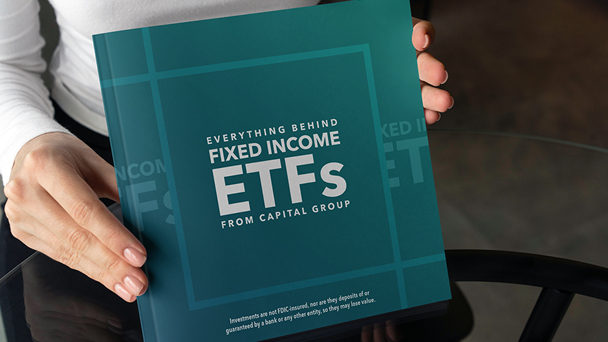Backed by a 50+ year track record of active fixed income management, our 9 bond ETFs aim to leverage the benefits of the ETF vehicle and were designed with investors’ long-term goals in mind.

Tradability
Greater liquidity, efficient pricing and the ability to trade intraday
We work closely with our market partners so they understand how we invest and can offer ample liquidity for our ETFs. We also take in-kind transfers1 when available to help keep costs low for our clients.

Transparency
Get daily visibility into underlying holdings and exposures
The holdings of our ETFs are published daily, which means you know exactly what your clients own. This clarity can bring some confidence, particularly if liquidity concerns arise during times of market stress.

Tax efficiency
Greater control over the timing of realizing capital gains/losses
Portfolio managers use custom baskets2 to transfer bonds with embedded gains3 out of the portfolio, when possible, during redemptions4 and aim to proactively realize losses inside the ETF to help offset potential future gains.

Discover everything behind our active fixed income ETFs.
Capital Group Fixed Income ETFs
How fixed income ETFs work
Your questions, answered
1 MIN
Unsure whether to choose a bond ETF or individual bonds? In this video, ETF specialist John Finneran highlights three reasons why we're seeing financial professionals opt for fixed income ETFs for the fixed income allocations of their clients' portfolios.
3 MIN
What is a fixed income ETF? As ETF specialist Asad Jamil explains, it's a vehicle that offers an efficient way to access a basket of bonds. And when it comes to liquidity, fixed income ETFs have an advantage over traditional bonds. Watch the video to hear why.
Additional fixed income ETF resources
Why you should consider leaning into active fixed income ETFs
Dig into the mechanics of fixed income ETFs
Learn how Capital Group pursues superior outcomes for fixed income investors
1 In-kind transfer: A transaction that can occur in the process of creating or redeeming ETF shares in which securities considered to be equal in value are exchanged instead of cash.
2 Custom basket: A feature of most ETFs that allow ETF issuers to create non-representative baskets of securities (i.e., not a pro-rata slice) that can be used during the creation/redemption process. The securities selected for the basket may help ETF issuers reduce trading costs for investors or avoid the realization of capital gains.
3 Embedded gain: The price appreciation that exists when the current market value of an asset within an ETF exceeds its original purchase price but because the asset hasn’t yet been sold, it hasn’t been realized or taxed.
4 ETF redemption: A process that occurs in the primary market when the secondary market can’t support ETF selling activity. The ETF shares are redeemed in exchange for a portfolio of securities, cash or a combination of the two.


